I. Introduction
Bevel gears, as a key transmission component, are widely used in mechanical systems where the transmission direction needs to be changed while maintaining the intersection of the axes. They achieve power transmission through the meshing of gears, ensuring the efficient operation of mechanical devices. Straight bevel gears and spiral bevel gears are the two main types of bevel gears, each with its unique design features and applicable scenarios. This article aims to help readers make the best choice based on project requirements through comparative analysis. This article aims to provide engineers and project decision-makers with a comprehensive comparison between spur bevel gears and spiral bevel gears, so as to select the most suitable gear type based on specific project requirements.
II Overview of Straight Bevel Gears
The tooth profile of spur bevel gears is straight and they are suitable for intersecting shaft transmission. Its design is simple, easy to understand and manufacture.
Advantages
It is easy to manufacture and low in cost
It is easy to install and debug
It is suitable for low-speed and light-load applications
Disadvantage
It makes a lot of noise when running at high speed
Strong vibration affects the smoothness of transmission
The efficiency is relatively low
Typical specification parameters
The gear ratio is determined based on the transmission requirements
module: Determines the size and strength of the gear
Materials: Commonly used are cast iron, steel, etc
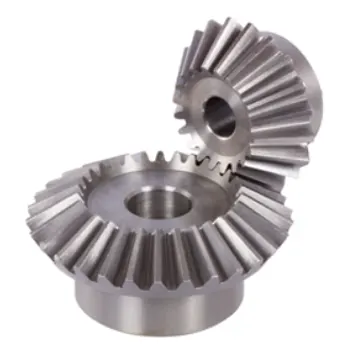
III. Overview of Spiral Bevel Gears
The tooth profile of spiral bevel gears is curved and involute, which makes the gear meshing more stable. Its design is complex, but its performance is superior.
Advantages
It operates smoothly with low noise
It has a strong load-bearing capacity and is suitable for high-load applications
It has high durability and a long service life
Disadvantage
It is complex to manufacture and costly
The alignment requirements are strict and the installation and commissioning are difficult
It may generate axial thrust, and additional support structures need to be designed
Introduction to Variants
Zero-degree spiral bevel gears are a variant of spiral bevel gears. Their tooth profile is close to that of straight teeth but retains some characteristics of spiral teeth, making them suitable for specific applications.
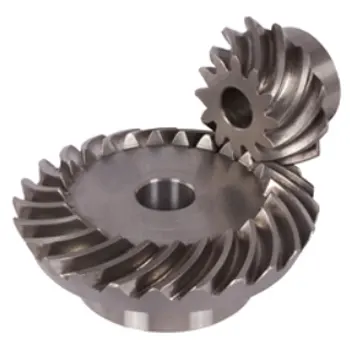
IV. Comparison between Spur Gears and Spiral Bevel gears
Performance comparison
Efficiency: Spiral bevel gears are usually higher
Noise: Spiral bevel gears are lower
Vibration: Spiral bevel gears are more stable
Service life: Spiral bevel gears have a longer lifespan
Manufacturing and cost comparison
The process difficulty is higher for spiral bevel gears
Material consumption: The two are comparable, but the spiral bevel gear may increase slightly due to its complex design
Overall cost: Spiral bevel gears are higher
Differences in applicable scenarios
For low speed and light load: straight bevel gears
High speed, high load: spiral bevel gears
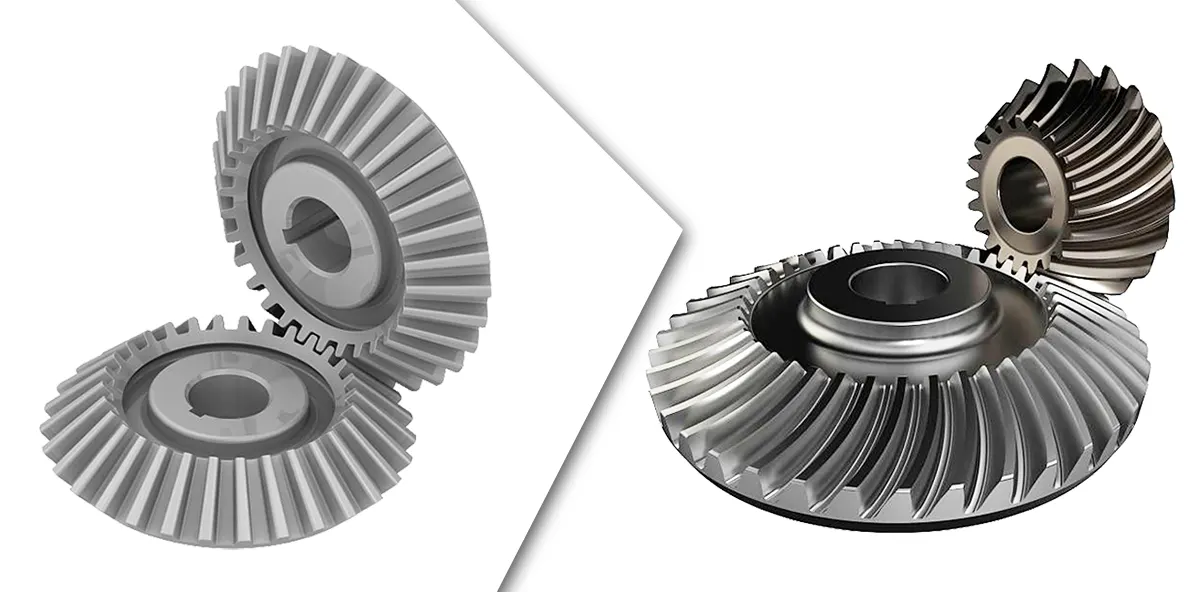
Key Differences Table
| Characteristic | Straight Bevel Gear | Spiral Bevel Gear |
| Tooth Profile | Straight line | Curved (involute) |
| Noise Level | High | Low |
| Vibration | Intense | Smooth |
| Efficiency | Relatively Low | Relatively High |
| Cost | Low | High |
| Applicable Scenario | Low-speed, light-load applications | High-speed, heavy-load applications |
| Manufacturing Complexity | Simple | Complex |
| Installation & Alignment Requirement | Easy; less stringent alignment needed | Difficult; strict alignment required |
| Axial Thrust | Generally none (or minimal) | May generate significant axial thrust, requiring additional support structures |
| Durability & Lifespan | Shorter | Longer |
V. A guide to choosing the best gears for your project
Project Requirements assessment
Speed: Determine the maximum rotational speed of the transmission system
Load: Evaluate the maximum load of the transmission system
Noise requirements: Consider the tolerance of the working environment for noise
Budget: Determine the acceptable cost range for the project
Consideration of selection factors
Environmental conditions: such as temperature, humidity, corrosiveness, etc
Maintenance requirements: Consider the ease of maintenance and repair costs of the gears
Precision requirements: Select the appropriate gear type based on the precision requirements of the transmission system
Decision-making steps
- Determine the shaft Angle and transmission direction
- Evaluate load and speed requirements
- Consider the requirements for noise and vibration
- Select the appropriate gear type based on the budget
- Verify the compatibility and installation conditions of the gears
Common Error avoidance
Ignore axial thrust: Spiral bevel gears may generate axial thrust, and an appropriate support structure needs to be designed
Lubrication issue: Ensure that the gears are adequately lubricated to reduce wear and noise
The alignment of helical bevel gears is inaccurate: The alignment requirements for helical bevel gears are strict, and it is necessary to ensure precise installation
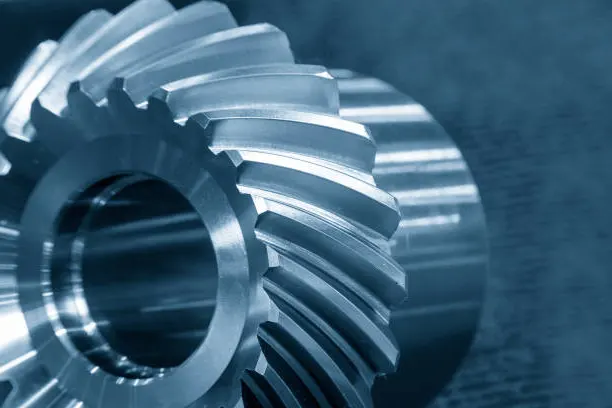
VI. Practical Application Cases
The application of spur bevel gears
Manual tools: such as drilling machines, sawing machines, etc
Simple machinery: such as conveyor belts, elevators, etc
Agricultural equipment: such as tractors, harvesters, etc
The application of spiral bevel gears
Automotive differential: It enables differential transmission between the left and right wheels
High-precision transmission systems for machine tools such as milling machines and grinders
Aviation equipment: such as aircraft landing gear, engine transmission systems, etc
Case Analysis
In the design of differentials, a certain automobile manufacturer initially adopted spur bevel gears. However, when operating at high speeds, the differential generates significant noise and vibration, which affects the driving experience. Later, the manufacturer switched to spiral bevel gears, successfully reducing noise and vibration, and enhancing the smoothness and durability of transmission.
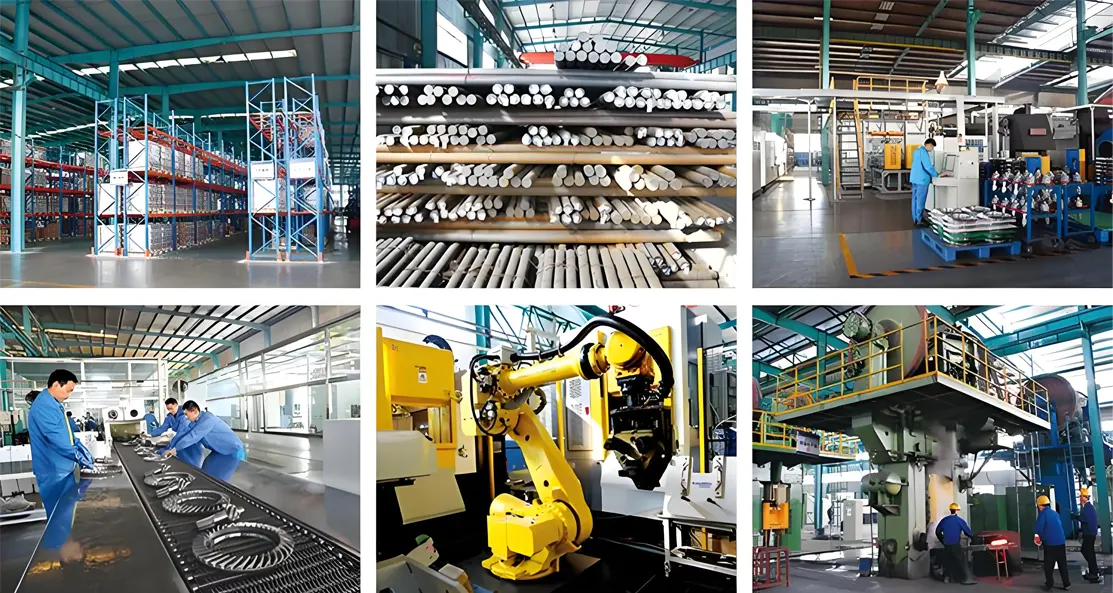
VII. Conclusion
Straight bevel gears and spiral bevel gears each have their unique design features and applicable scenarios. Straight bevel gears are easy to manufacture and have a low cost, making them suitable for low-speed and light-load applications. Spiral bevel gears operate smoothly, generate low noise and have strong load-carrying capacity, making them suitable for high-speed and high-load applications. When choosing the type of gear, a comprehensive assessment should be conducted based on the project requirements. With the development of advanced materials and 3D printing technology, gear manufacturing will become more efficient, precise and personalized. In the future, we can look forward to more innovative gear designs to meet the constantly changing demands of mechanical transmission.
